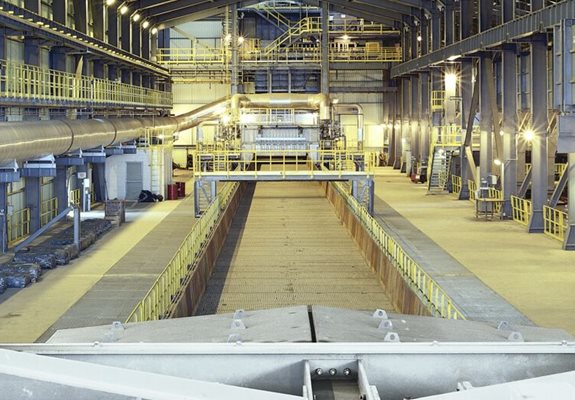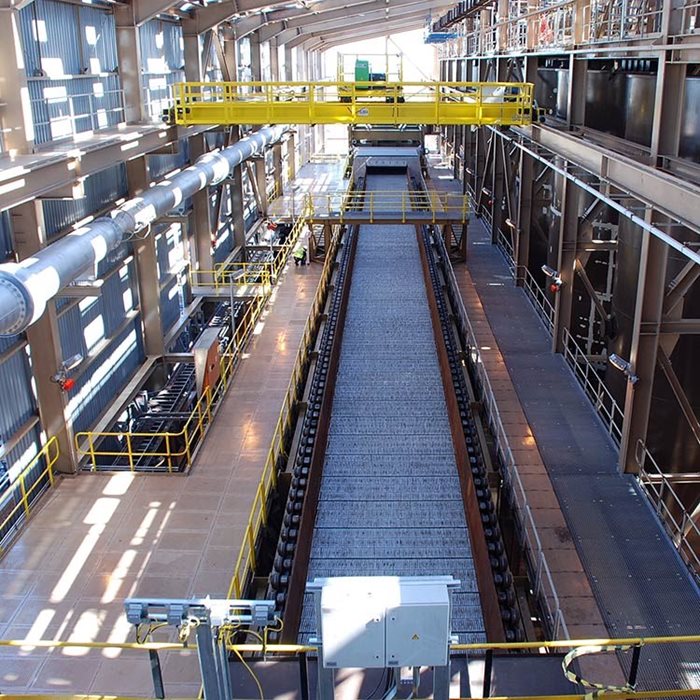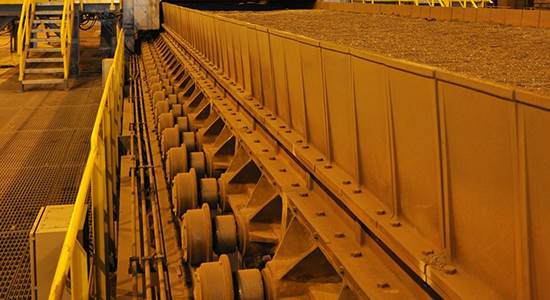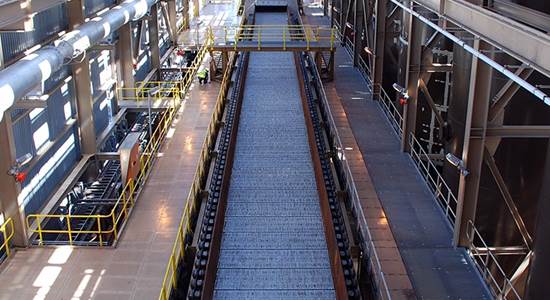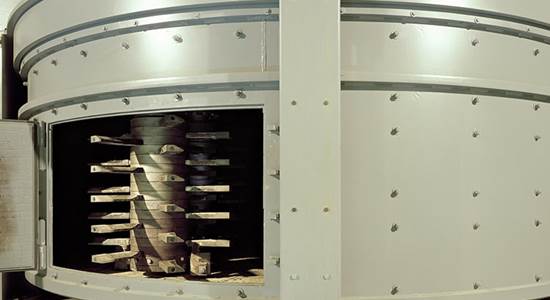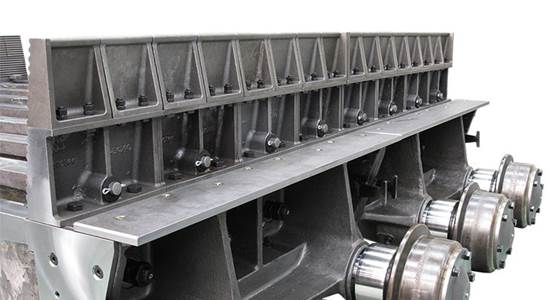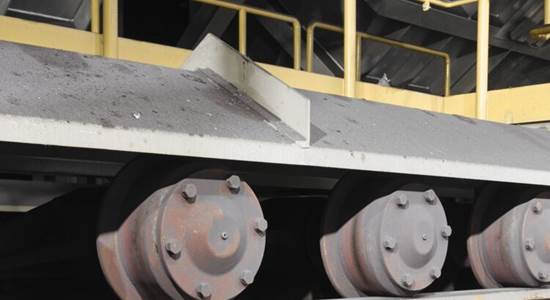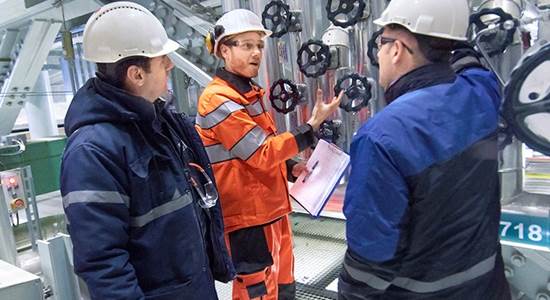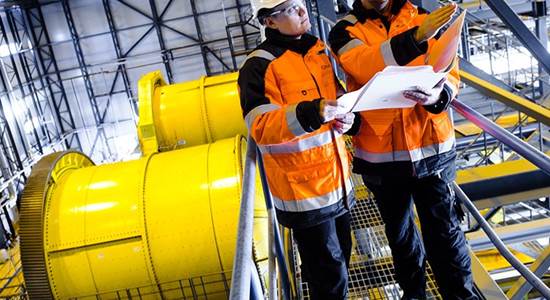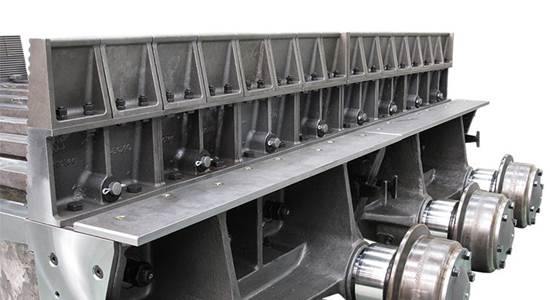The Metso traveling grate sintering plant process begins with the preparation of a raw mix of iron ores, fluxes, in-plant dust and spillage fines, solid fuel, and return fines. Water is added to the raw mix to obtain optimum permeability for lower electricity consumption, maintained by conveying the raw mix carefully onto the sinter machine. Its surface is then ignited, air is induced through the ignited layer and sintering proceeds in a vertical direction in the sinter strand's material bed. The sinter is then cooled, usually in a separate sinter cooler located at the sinter machine's discharge end.
The cooled sinter is crushed down to a predetermined particle size. Undersized sinter that is not suitable for the blast furnace is recycled in the return fines bin. Product sinter from Metso sinter plants complies with all modern requirements for blast furnaces such as grain size, basicity, and slag composition.
Metso sinter plants are designed to meet the most stringent environmental regulations. For effective dust collection, electrostatic precipitators and/or bag filters dedust the sinter plant waste gas and air from the plant dedusting system. We provide processes for limiting dioxin, SOx, and NOx emissions, while incorporating noise attenuation equipment to meet local regulations.
In the EOS process, CO and pollutants such as SOx and NOx, dust and dioxins/furans are passed through the sinter layer together with the recirculated gas. While CO gas is post-combusted, substantially saving on solid fuel, the pollutants are partially retained in the sinter layer and/or thermally decomposed. Metso Travelling Grate Sinter Plants can easily be converted into EOS plants. with minimum production disruption.
AUTOMATED MATERIAL DOSING AND FEEDING
All raw materials are dosed automatically based on the required composition of the overall mix. Water and additional binders are added to achieve the optimal bed permeability. The hearth layer bin is equipped with an adjustable gate that ensures the correct height of the hearth layer. The feed hopper outlet has adjustable gates and variable roll feeder speed. Ultrasonic sensors control the bed height for optimum productivity.
HIGH-INTENSITY MIXING AND GRANULATION
Mixing and granulation is performed in two stages by high-intensity bowl-type mixers. These cost-effective and compact machines are extremely effective, especially when processing fine-grained ores.
HIGH-PERFORMANCE, EASY-TO-MAINTAIN IGNITION FURNACE
The Metso ignition furnace consists of standardized segments with straight, refractory-lined vertical side walls and a laterally arranged special combustion chamber on each side. The furnace design ensures even temperature distribution and uniform ignition.
SINTER MACHINE EQUIPPED WITH PROVEN, DURABLE PALLET CARS
Our pallet car design has proven itself in hundreds of plant operations around the world for decades, and we are continuously working to improve it even further. The pallet cars are designed to suffer minimum wear, giving them a long operational lifespan. Grate bars can be easily removed for maintenance purposes.
Our circular sinter cooler is designed for forced draft air-cooling, and features a hood that minimizes dust emissions in to the surrounding environment. Benefits include:
- Optimum permeability of the sinter layer on the cooler via our unique segregation feed chute
- High cooling efficiency due to high specific volume flow and effective sealing
- Low dust emissions from improved material handling and dedusting hoods
- Efficient friction drives with low power consumption
- Waste heat generated during sinter cooling can be used for power generation and other applications
ADVANCED PROCESS CONTROL AND AUTOMATION FOR STABLE, CONTINUOUS PRODUCTION
Our state-of-the-art process control and automation solutions help to ensure stable and continuous production, high availability and reliability, and excellent end-product quality with minimum intervention from operators.
